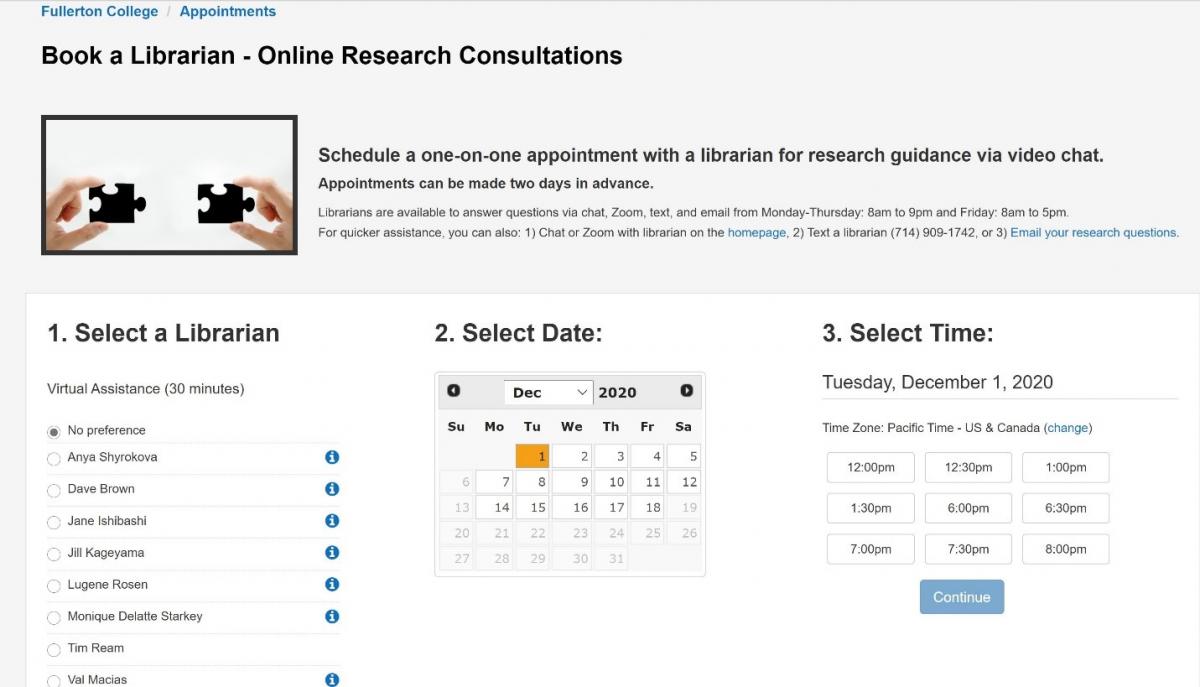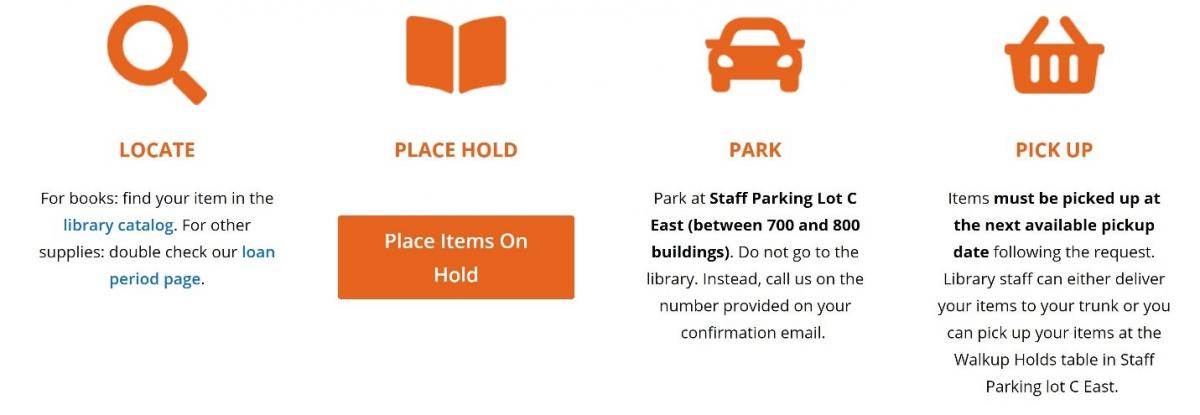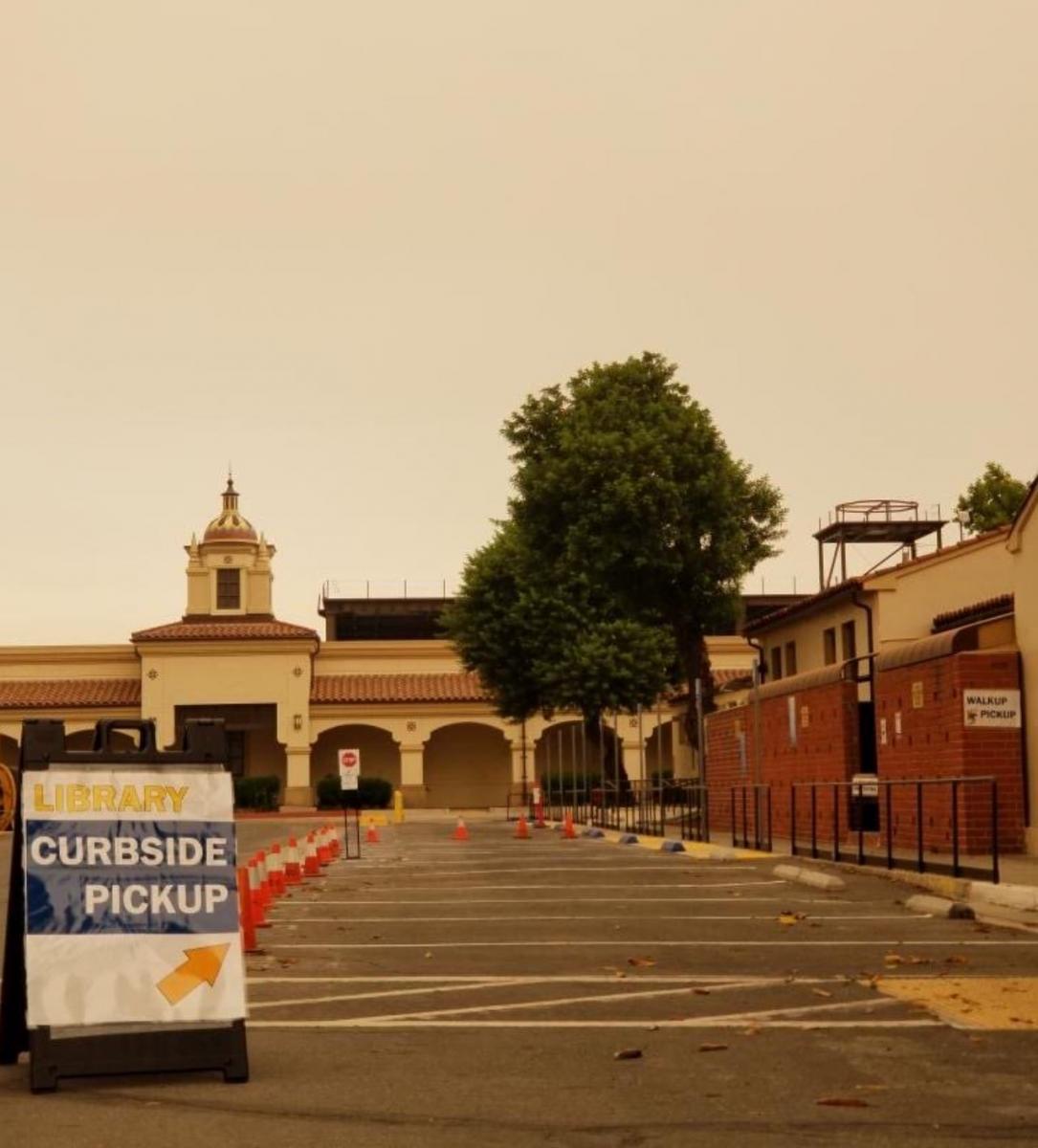Fullerton College Library Adaptations to the Campus Closure
By Fullerton College Library Staff
Under stress and smoky skies, librarians and staff make a concerted effort to provide comparable services for students during the library closure.
In spring 2020, in the face of the pandemic, Fullerton College closed its campus and everyone hit the ground running to make the transition to a virtual environment. The library was no exception. Librarians were already using LibAnswers for chat reference, so Fullerton’s instruction librarian configured LibCal for research consultations, allowing students to schedule their own Zoom sessions for one-on-one assistance from a librarian.

Librarians amped up outreach, attending technology and engineering departmental Zoom meetings to promote new and extended trial databases that filled in some of their gaps in fashion, welding, and technical careers. Networking with art faculty resulted in the art division’s purchase of the Drama Online National Theatre Collection to add to the library’s streaming video offerings. To help students who are feeling isolated, the circulation, acquisitions, and student programming/reference librarians offered community-building opportunities via online gatherings, such as game days, leisure reading group, queer book club, LGBTQIA+ social hour, a Brave Space Student Forum, and an LGBTQIA+ forum.
Curbside Pick-Up Workflow
Students began clamoring for library books, particularly reserve titles. In response, the systems librarian configured Alma to support student requests and facilitate a remote workflow. He worked with circulation staff to create fulfillment loan rules and terms of use to accommodate one-week check-outs for our reserve, reference, and general circulation materials. The assessment librarian created an online form using Qualtrics to capture student requests and corresponding pickup dates and times.
Library staff working remotely in Alma used the data from the Qualtrics form to process requests and coordinate the on-site workflow with co-workers. Throughout the process, library staff used Microsoft Teams to communicate, handle logistics, and share files. Upon receiving a student’s item request via email through the Qualtrics form, staff search for the item is then searched for in Alma. Once the item is located, staff confirm the item status is “In place” and not “Loan”.

with a link to the Qualtrics request form
After the item is verified “In Place,” staff select the Request Button and choose the Request Type “Patron Physical Item Request,” and then enter the “Requestor” (Student’s name or school I.D.). Staff then select the appropriate “Pickup At,” “Material Type,” and “Date Needed By,” which is the pick-up date. The “Loan Period” can be 1 or 2 weeks, even for reference books that formerly were in-house use only, and reserve books that formerly were two-hour loans.
Once the selections are entered and submitted, staff receive a confirmation message. Staff then copy the barcode of the requested item and select “Scan In” under Fulfillment. Once the item is scanned in, an image of a Hold Slip will pop up on the screen and the status becomes “Hold Shelf.” Staff saves the hold slip as a PDF file with the requestor’s name and title of the book in a designated Teams folder. On-site staff retrieve the requested books and place the printed PDF in the books, allowing distribution staff to easily identify the borrowers as they arrive. If questions arise, a staff member maintains a master spreadsheet in Teams that lists information relevant to the loans, including student names, student I.D. number, contact number, e-mail address, request date, request approval status, method of communication with the student (e-mail or phone), title of item requested, barcode of item requested, check-out status, check-out date, staff initials checking out the item, and any comments describing issues.

hazy sky from California wildfires in October
Distribution staff consult a spreadsheet with student requests and pick-up appointments. They take the requested items for the day and move their operations to a curbside location, where students can pull up in their vehicles or approach by foot. Students pick up their items on Mondays or Thursdays during a three-hour time block. Using the library’s VOIP phone number, students call staff when they arrive. After confirming the student requests, distribution staff place items in the trunk or passenger seat. When a student walks up, items are placed on a table to allow for social distancing. After the student leaves, staff perform the loan transaction in Alma.
In order to provide a safe alternative for returning materials, the library purchased an outdoor book drop. The book drop is open 24/7 and emptied three times a week by library staff. Items removed from the drop box are quarantined in a secure area for three days before being re-shelved.
Despite the strenuous requests by some students for the curbside service, there have been only 173 approved title requests from August to November. Twenty-six requests were denied because the titles are faculty property on reserve, missing, on order, or in-process in technical services. Of these 173 titles, 62 titles were never claimed. Though on ten-month contracts, the systems and assessment librarians worked summer hours to prepare this service for fall semester. In addition to the extra librarian hours, the library also hired two new staff members to staff the curbside pick-up location. The quick work of librarians and staff to increase resource accessibility was recognized by the Vice President of Student Services, whose office included the library’s work in its convocation video and their "Inside the Hive" newsletter article. In addition, a circulation worker was nominated for the college’s classified appreciation award for his work on the curbside pick-up service. Fullerton College Library is dedicated to serving our students and has adapted services to meet student needs.